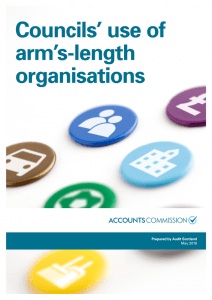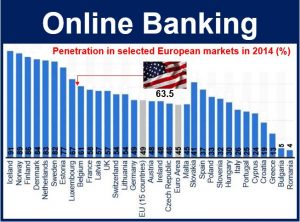03 okt How Can I Calculate the Carrying Value of a Bond?
Content
- Module 12: Non-Current Liabilities
- What Is the Carrying Value of a Bond?
- Watch It: Bonds Issued at a Discount
- Financial Statements
- Financial Performance
- The balance in an unamortized discount on bonds payable: a. would be added to the face amount of…
- What is the Effective Interest Method for Amortizing Bond Discounts and Bond Premiums?

Hence, the balance in the premium or discount account is the unamortized balance. For example, suppose a company sold $200,000, 5-year, 10% bonds for $198,000. The $2,000 bond discount ($200,000 – $198,000) amortization is $400 ($2,000/5) for each of the five amortization periods. Know the difference between straight-line amortization and the effective-interest method. Straight-line amortization records the same amount of interest expense in each period until the bond matures.

Therefore, it is reported as a contra-account of bond payable. It’s a monetary figure reflected by the amount paid in addition to the fair market value of a company when that company is purchased. Goodwill usually isn’t amortized because its useful life is indeterminate. However, impairment to the book value of goodwill is measured as fair value dips below book value. Bond issuers and the specific bond instruments they offer are rated by credit rating agencies such as Moody’s Investors Service and Standard & Poor’s.
Module 12: Non-Current Liabilities
Like other long-term notes payable, the mortgage may stipulate either a fixed or an adjustable interest rate. For the second interest period, bond interest expense will be $8,530 and the premium amortization will be $1,470. In this case, the bonds sell for $107,985, which results in bond premium of $7,985 and an effective-interest rate of 8%.
Since interest rates continually fluctuate, bonds are rarely sold at their face values. Instead, they sell at a premium or at a discount to par value, depending on the difference between current interest rates and the stated interest rate for the bond on the issue date. Premiums and discounts are amortized over the life of the bond.
What Is the Carrying Value of a Bond?
In the next section, you’ll see an example of the calculation using the straight-line amortization method. Ultimately, the unamortized portion of the bond’s discount or premium is either subtracted from or added to the bond’s face value to arrive at carrying value. A carrying value is carried on the balance sheet of a company’s financial statements. the balance in unamortized discount on bonds payable The carrying value of a bond is the bond’s face value plus any unamortized premiums or less any unamortized discounts. In other words, a discount on bond payable means that the bond was sold for less than the amount the issuer will have to pay back in the future. Ratings Game Many bond buyers rely on rating services to assess bond risk.
Should the balance in discount on bonds payable be reported?
Reporting of discount or premium on bonds payable on the financial statements. The discount on bonds payable should be recorded in the balance sheet by directly subtracting it from the bond's face value. However, the premium on bonds payable should be recorded by adding it to the maturity amount of the bond.
When we issue a bond at a premium, we are selling the bond for more than it is worth. We always record Bond Payable at the amount we have to pay back which is the face value or principal amount of the bond. The difference between the price we sell it and the amount we have to pay back is recorded in a liability account called Premium on Bonds Payable. Just like with a discount, the premium amount will be removed over the life of the bond by amortizing it over the life of the bond. The premium will decrease bond interest expense when we record the semiannual interest payment. When we issue a bond at a discount, remember we are selling the bond for less than it is worth or less than we are required to pay back.
Watch It: Bonds Issued at a Discount
If you are having trouble seeing or completing this challenge, this page may help. If you continue to experience issues, you can contact JSTOR support. As we note from the table below, the ending balance amount moves towards the face value of the bond at maturity. Each yearly income statement would include $9,544.40 of interest expense ($4,772.20 X 2). The straight-line approach suffers from the same limitations discussed earlier, and is acceptable only if the results are not materially different from those resulting with the effective-interest technique.

9, for the GASB 34 district-wide statements, there will be a conversion entry at year end to report the unamortized issuance costs on the Statement of Net Assets. Issuers must set the contract rate before the bonds are actually sold to allow time for such activities as printing the bonds. Assume, for instance, that the contract rate for a bond issue is set at 12%. If the market rate is equal to the contract rate, the bonds will sell at their face value.
Financial Statements
The semiannual interest paid to bondholders on Dec. 31 is $450 ($10,000 maturity amount of bond × 9% coupon interest rate × 6/ 12 for semiannual payment). The $19 difference between the $469 interest expense and the $450 cash payment is the amount of the discount amortized. The entry on December 31 to record the interest payment using the effective interest method of amortizing interest is shown on the following page. The reverse of an unamortized bond discount is the unamortized bond premium.

As the risk level increases, the rate increases to compensate purchasers for the bonds’ increased risk. Also, the market rate is generally higher when the time period until the bond matures is longer due to the risk of adverse events occurring over a longer time period. When a company issues bonds, it incurs a long-term liability on which periodic interest payments must be made, usually twice a year. If interest dates fall on other than balance sheet dates, the company must accrue interest in the proper periods.
An unamortized bond discount is reported within a contra liability account in the balance sheet of the issuing entity. The premium or the discount on bonds payable that has not yet been amortized to interest expense will be reported immediately after the par value of the bonds in the liabilities section of the balance sheet. Generally, if the bonds are not maturing within one year of the balance sheet date, the amounts will be reported in the long-term or noncurrent liabilities section of the balance sheet.
- Calculate annual interest expense by multiplying the coupon rate, or interest rate, by the par value of the bond.
- The $19 difference between the $469 interest expense and the $450 cash payment is the amount of the discount amortized.
- 2) Amortization of premium or discount over the life of the bonds.
- Instead, they sell at a premium or at a discount to par value, depending on the difference between current interest rates and the stated interest rate for the bond on the issue date.
- This section explains how to use present value concepts to price the Fila discount bond and the Adidas premium bond described earlier.
- The transaction is reported in the year-end CAFR as ”Other Financing Sources – Long-Term Debt Issued” and ”Other Financing Uses – Repayment of ERIP Liability.
Identify the requirements for the financial statement presentation and analysis of liabilities. See Table 3 for interest expense and carrying value calculations over the life of the bond using the straight‐line method of amortization . For example, $5,000,000 of serial bonds, $500,000 of which mature each year from 5–14 years after they are issued. Regarding the company’s ability to make its interest payments.
Is discount on bonds payable a debit or credit balance?
Do You Debit or Credit Discounts on Bonds Payable? Discount on Bonds Payable is a contra liability account with a debit balance, which is contrary to the normal credit balance of its parent Bonds Payable liability account.







